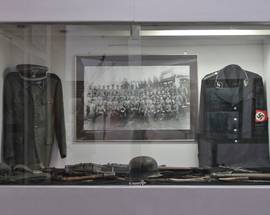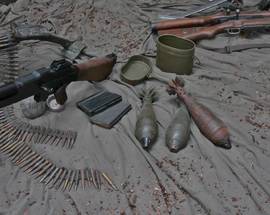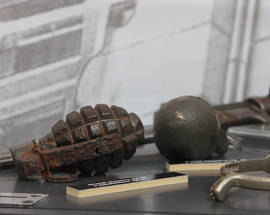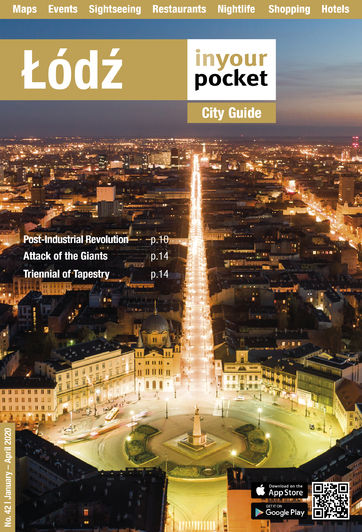The hasty Nazi retreat left Radogoszcz Prison a smouldering shell, but its importance as a site of struggle and martyrdom was not lost on the locals. Work began immediately to conserve the prison as a memorial for all who suffered within and an exhibition was opened on the third anniversary of Łódź’s liberation, while in 1961 a thirty metre spire was unveiled on the site of the former camp. The courtyard, slightly smaller than the original, is now home to numerous artsy memorials. A number of plaques commemorate those who died within and those Łódź citizens deported to Mauthausen and Dachau. Along the exterior wall on ul. Zgierska is a mass grave of 37 unidentified victims.
The exhibition hall lies just beyond the hollow shell of the factory, and inside the displays are accompanied by English text. The prescribed tour takes visitors through a chronological history of wartime Poland beginning with the 1939 invasion and the subsequent battle for Łódź. Posters calling men to arms, gas masks and grenades sit behind glass cases, paying tribute to those who gallantly resisted the Nazi war machine. Innocuous items like beer bottles, cigarette boxes and tea cups sit alongside more sinister displays like Germanized street signs, execution lists and photos of Łódź decked out with fluttering swastikas. It looks chilling enough, but it’s not half as thought-provoking as what lies in store. Beyond the initial displays are the mug shots of dozens of children sent away to be ‘Germanized’ in the camp on ul. Sporna 73. Next up is a section devoted to the Jewish Ghetto, with items of note including ghetto currency and the mandatory yellow stars. Further on there’s also a display of letters from concentration camp prisoners, striped uniforms and even a bar of soap allegedly made from human fat. Your tour concludes with a couple of rooms dedicated to Radogoszcz itself. Standing centre stage are copies of a flogging block and a prisoner’s bunk, while clinging to the walls are the photos of inmates as well as images of cheery looking guards. None of this prepares you for the final room, however. It’s here that the events of January 18th, 1945 are remembered. The photographs of charred, burned bodies leave nothing to the imagination, while making the display all the more poignant are a collection of singed family photographs recovered from the dead. There is one permanent exhibition "Radogoszcz 1939 - 1945".
Radogoszcz Prison Museum
Open
Open 10:00-17:00. Sat, Sun 10:00-16:00, Closed Mon.







Comments